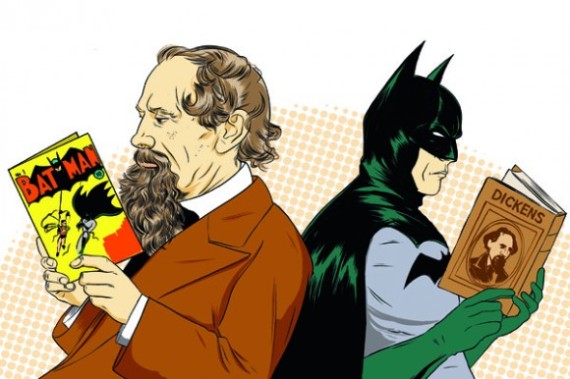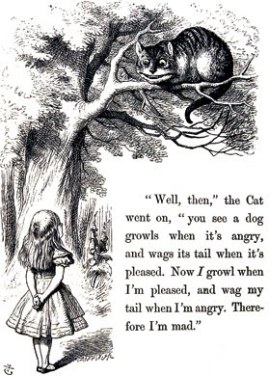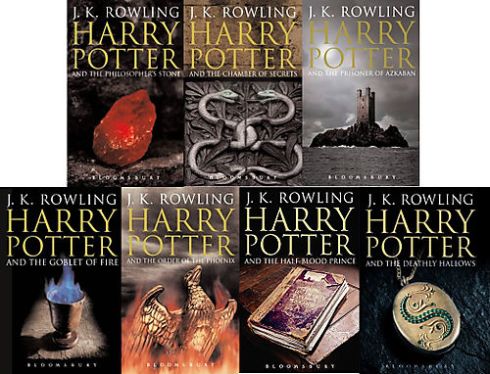I have loved comic books right from when I first learnt how to read. It started with Tintin and Asterix and Obelix as a child, which my mum introduced me to. I later discovered superheroes as a teenager – Batman and X-Men were (and still are) particular favourites. Not long after that I started to widen my reading list to include series’ like Hellblazer, Sandman, Lucifer, The Authority, Phonogram and Watchmen, as well as many popular manga titles like Death Note, Cardcaptor Sakura, Neon Genesis Evangelion, D-Gray Man, Black Butler and Ouran High School Host Club. So that’s me: nowhere near an expert, but very much an avid fan-girl.
There were of course more innocent times when I pondered things like, ‘Wait, is that guy Marvel or DC?’ And ‘So what is the difference between manga and anime?’ It’s all part of the learning curve. It was while reading the blurb of Watchmen (and very much still curving the learn) that I first remember coming across the term ‘graphic novel.’ It was used in a quote from Time magazine: “[Watchmen is] one of the greatest graphic novels of all time.” ‘Graphic novel?’ I wondered. ‘So this isn’t just regular comic I’m reading then…’ I mean, the word ‘novel’ as opposed to ‘book’ somehow sounds superior doesn’t it? Coupled with the sheer strength of Moore and Gibbon’s work I naively believed that the formula must be:
graphic novel > comic book
As though ‘graphic novel’ was a higher title bestowed upon a higher quality of comic book. Like a knighthood or something. I also found out that Watchmen was the only comic book to have made Time’s 100 Greatest Novels of All Time list, which cemented all this further in my mind. ‘Wow!’ I thought, whilst probably brushing my hair into a frizzy hell. ‘This comic book is so good its ranked among real books!’
Of course graphic novel is not any determining value for quality. What ‘graphic novel’ is actually defined as is merely collected issues of a continuing storyline of a particular character/team/franchise. It’s a volume, really. I don’t know why they didn’t use volume as the name for it in the first place as they do in Japan for manga collections. According to Wikipedia (because I’m a lazy researcher) the term first appeared in 1978, was thrown around a bit for similar titles to Watchmen,and eventually become popularised enough to be inducted as an official category in bookshops and publishing companies. I suppose the thinking was that as the stories became longer, each issue served as a chapter, and so to collect all of these chapters together meant that the volume resembled a regular book…but with pictures. So yes, the term makes sense. (Certainly in my mind, a graphic novel is a more fitting description for the format that most illustrated books take – particularly children’s books, in which image and word are separated rather than integrated.)
I’m not certainly not against collecting issues of comics together – my comic book consumption these days is largely centred around waiting for collected volumes to be published as I simply do not have the time, space or money anymore for every individual issue of every millions of titles that apparently are necessary for every bloody character…*SHARP INTAKE OF BREATH* Long story short: I like volumes. (Manga titles are collected as ‘volumes’, FYI.) My problem is that the term has become so ubiquitous that comic book and graphic novel are used as interchangeable names now even when the technical definition is incorrect. In the same way I thought a graphic novel was a fancy word for a comic book as a kid, nowadays it is commonplace for people to use the former rather than the latter for one of two reasons:
- They genuinely think that the comic they have read is ‘too good’ to be classed ‘simply’ as a comic.
- They don’t want to admit they enjoy reading comic books.
The first point I think I’ve talked about already. If you are reading a collected volume of issues, then yes, you are technically reading a graphic novel and I’ll let you off. If not, there’s no excuse: It’s a comic book. If you enjoyed it then you enjoyed it because it was a well-written and well-drawn comic book.
The second point is what I call the Harry Potter factor. Do you remember when Harry Potter started to emerge as really big thing? Like a massive-all-consuming-religious-behemoth-of-literature thing? It was enjoyed by millions of children everywhere (myself included) but it was also enjoyed by millions of slightly ashamed adults. They were ashamed because they actually enjoyed reading a kid’s book on the train to work. So rather than these poor ashamed adults just removing the dust jackets, the publishing company came up with an alternative solution for them: they published new editions with fancy-schmancy ‘adult’ covers. I’m guessing this was also quite handy for the sales figures (as if they needed help…)
This issue is to do with elevation. Usually when a product has to be ‘elevated’ it means that its original form is not deemed palatable enough for consumers beyond the product’s normal fan circle. So it has to be re-branded. You can also see this exemplified in the re-release of old films in 3D – same content; different jacket (and more money to be made). A more complex example is the elevation of graffiti to street art. Where graffiti or tagging is illegal, certain examples by certain artists – Banksy, for instance – are now protected and treasured by the communities of whose walls they adorn. Of course in the case of Banksy a conscious decision was made by the artist to elevate his own work by exhibiting it in gallery spaces and selling it, and in doing so I don’t think he intentionally meant to dilute the graffiti art genre away from subversive, transient and – most importantly – free pieces into the massively fashionable and collectable commodities that they have become. It’s hard to get on a bus these days without seeing some dude or lady-dude sporting the ‘Obey’ motif by Shepard Fairey on a beanie, for instance. Now, as a commercial artist I of course recognise and understand the need and want to make a living from doing what you love. However, donning my critics’ hat (which is covered with coffee stains and glitter in case you were wondering) I can’t help but see this tale of a rebellious medium being eaten up and then spat back out in glossier, commercialised packaging as an all too familiar and cautionary one.
Comic books, however, were born into commercialism. They began life as satirical cartoon strips in newspapers and magazines, where they still survive today, and morphed into the form we know them in today through fantasy, sci-fi and Superheroe stories. (I am ignoring the history of manga here, which is far older and culturally rooted in classical Japanese art.) Comic books never had to worry about the whole ‘selling out’ thing. That’s the beauty of them in a way: crude, intelligent, arty, surreal or serious; as long as they found a fan base, big or small, they could survive. They had no formal rules of content or conduct really – aside from the obvious self-defining ‘must integrate pictures with text’ one. Comics are a true art form for the masses. Comics were born to be sold. In the same way that retro-fitted 3D doesn’t improve a film and a fancier dustcover doesn’t improve a Harry Potter book, calling a comic book a graphic novel doesn’t improve the comic book. If we make the mistake of assuming that a graphic novel is an elevated comic then we could make the mistake of thinking that a comic book is a downgraded graphic novel by default, in the same way we could assume that a black and white film is a downgraded colour film.
Let’s not forget either that comic books were once – and sort of still are – aimed at children and teenagers. The fact that these kids grew up and continued to enjoy them speaks for the strength of the storytelling in having universal and enduring appeal, not for the strength of the marketing campaign or the category it can be found under in a bookshop.
“[I write graphic novels not comics books?] Meant as a compliment I suppose. But all of a sudden I felt like someone who’d been informed that she wasn’t actually a hooker; that in fact she was a lady of the evening.” – Neil Gaiman, The Sandman Companion (1999)





I always thought comic books and graphic novel as the same. Graphic novel is probably just a fancier name.
LikeLike
I love your example of the adult-friendly Harry Potter covers!
Well, as for this sticky subject of graphic novels, I suggest it be taken for what it is and use it as you see fit. That Neil Gaiman quote is just distracting.
The trade paperback collections of previous comic books get that category and we all understand its a marketing device.
But what about those works that are created especially as full-length books? You know, titles like Maus, Persepolis, and Blankets? Those are truly the only graphic novels that matter, that give meaning to that term.
Sometimes the typical trade collections will surprise you and rise to the level of a genuine “graphic novel.” But that’s all because of the talent and vision of the creative team behind that particular project.
LikeLike
Thanks for the feedback! I’m still a bit of a newbie to blogging and am still surprised that people actually take the time to read my inane ramblings…
I agree with you about the Neil Gaiman quote – people have been a bit confused about it being at the end. I just really love the quote and wanted to crow-bar it in!
I understand where you’re coming from – titles such as the ones you mentioned do stand out from the crowd and if the categorisation of ‘graphic novel’ is intended as a gold star seal of approval then they are definitely deserving of it.
My issue is that exactly that – that a term that began as a mere technical definition of a collected series has become inflated into some sort of seal of approval that a publisher can use when releasing a title to automatically bolster its worth as being ‘above’ a standard comic, whether its content is actually ‘deserving’ of the term or not.
If the word ‘comic’ was dropped completely and replaced with ‘graphic novel’ instead then this hierarchical system – which I see as unfair – would be gone, or vice versa and the problem would cease to exist. While the two exist side by side it means that a title is judged before it has even been read or reviewed based solely on its categorisation on the book shelf.
I know I’m probably being pedantic about it – it’s sort of a pet peeve of mine! I’ve even seen the term ‘graphic novella’ used recently. I mean….surely that’s going too far.
LikeLike
I love your argument. I’ll put it to you this way, yes, I do find myself hesitating sometimes to even use the term comic book! The term graphic novel has been used and used so much that it does lose its meaning. And, sure, it is a way for the whole comics industry to give their product a special distinction.
However, I feel confident that, among the masses of actual comic book buyers, they’re okay using the graphic novel term whenever it fits. For them, when they buy comics, they’re going out to buy their “funny books,” or just “books.”
LikeLike
Is it that they end?
LikeLike
First of all I would like to say awesome blog! I had a quick question in which
I’d like to ask if you don’t mind. I was interested to know how you center yourself and clear your mind prior to writing.
I have had a hard time clearing my mind in getting my ideas out.
I do take pleasure in writing however it just seems like the
first 10 to 15 minutes are usually wasted simply just trying to figure out how to begin. Any ideas or tips?
Thanks!
LikeLike
Hello, and sorry for the late reply!
I’m really glad you enjoyed reading my blog 🙂 I know exactly what you mean – it can be hard to get your mind into that ‘writing zone.’ I’m not a regular blogger and the reason why is because I can only write when I’m really gripped by a good subject to write about. Sometimes I’ll be sitting doing some work or eating lunch and an idea will hit me, or I’ll be reading someone’s else’s writing and an idea will come from that. As soon as that happens I usually write the idea in my notes on my phone and work on it later when I have the time. Often I will write a draft of a blog, get stuck half way through, and come back to it a few days or even weeks later and be able to finish it.
If you’re a regular blogger and like to keep to a schedule, then I would suggest the best way around ‘writer’s block’ is to sit down and write whatever comes into your head, even if it’s rubbish, until you start writing something good. Normally the first paragraph of anything you write you will end up deleting after finishing it, but that’s fine. It’s sort of like taking a run up to a jump. If that doesn’t work then I would suggest going away and distracting yourself and an idea will probably come to you.
My final tip is to not forget that writing is a constant learning curve, and the more you do it, the better you will get at it.
Hope some of that is helpful!
LikeLike
Enjoyed reading your process of thought, you definitely helped clear up my confusion about graphic vs comic. I also love your description of the writing process, would like to use it with my eighth grade writing group.
LikeLike
Thanks! By all means use it. I’m glad you found it useful 🙂
LikeLike